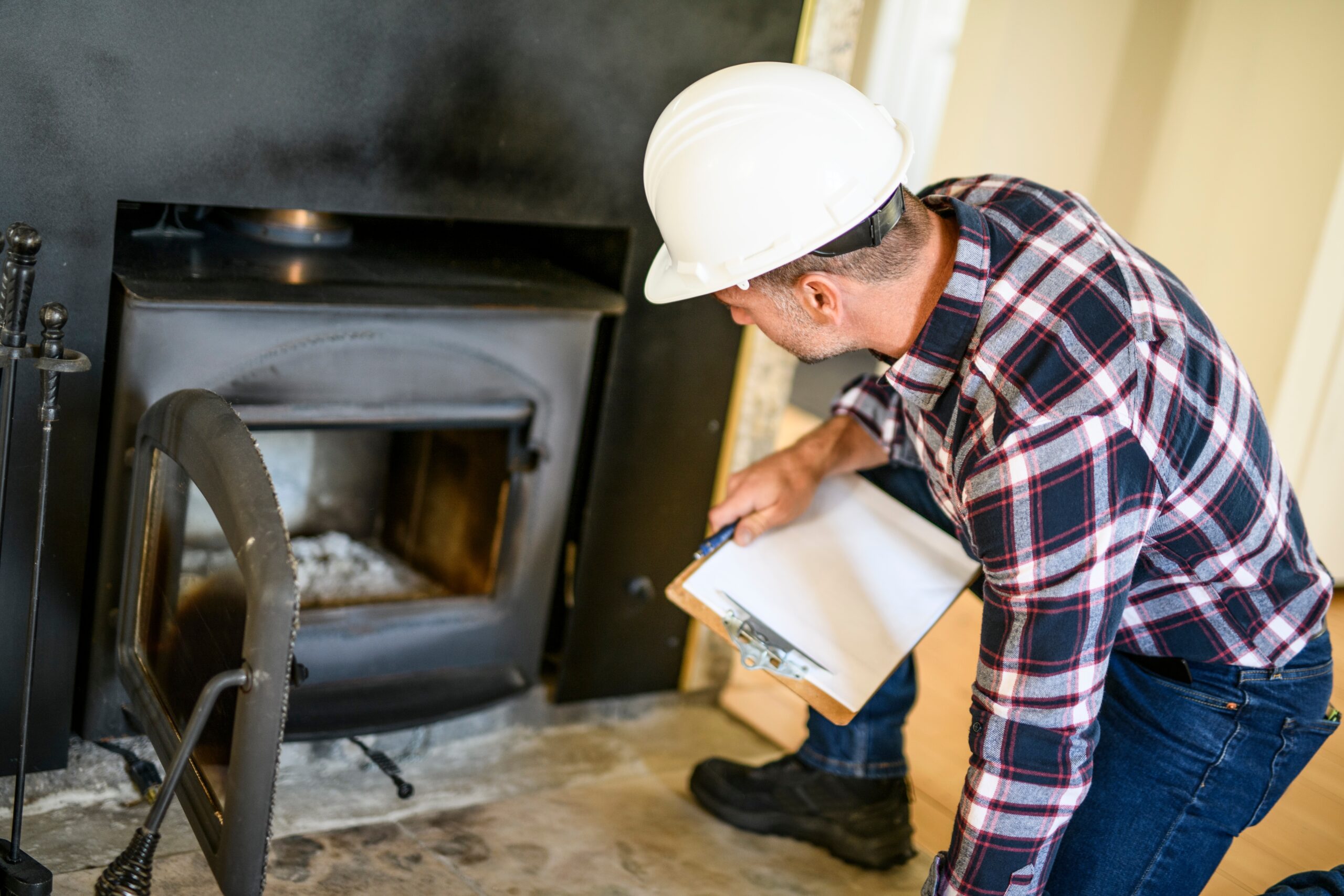Your chimney might look fine from the outside, but appearances can be deceiving. The most dangerous problems often hide inside: cracked flue liners, creosote buildup, or structural deterioration. These issues develop silently and create serious fire hazards and health risks.
According to the National Fire Protection Association, chimney-related fires cause over $125 million in property damage every year. Most of these incidents are linked to poor maintenance and could have been prevented with regular inspections.
An annual chimney inspection is not just a recommendation – it is essential protection for your home and family. Certified inspectors use specialized equipment to uncover hidden dangers before they become costly or life-threatening.
The unseen risks inside your chimney
Invisible cracks in the flue liner
Your chimney’s flue liner is its first line of defense against heat and corrosive gases. Over time, thermal expansion creates hairline cracks that are impossible to see without proper equipment. These cracks allow heat transfer to walls, toxic gases to enter your home, and moisture to damage the structure. Even small cracks can quickly expand and become hazardous.
Dangerous creosote and soot accumulation
Creosote buildup occurs gradually and isn’t always visible. This flammable substance forms in three stages:
- stage 1: flaky, easy to remove
- stage 2: tar-like, more difficult to clean
- stage 3: hardened, glazed, extremely dangerous
Stage 3 creosote can ignite at low temperatures, causing chimney fires that spread to your home. Regular chimney servicing is the only way to catch buildup early.
Hidden blockages and wildlife intrusions
Animals often build nests in chimneys, blocking airflow. Problems include bird nests, squirrel or raccoon damage, storm debris, and vegetation growth. These blockages can cause carbon monoxide to back up into your home, posing a silent but deadly risk.
What does a chimney inspection include?
Level 1: standard visual inspection
Covers exterior chimney structure, fireplace and damper, accessible flue areas, and a basic safety check. Recommended for regular maintenance with no known issues.
Level 2: comprehensive video inspection
Includes everything from level 1 plus a camera inspection of the flue, detailed structural analysis, ventilation testing, and a written report with photos. Recommended when selling a home, after weather damage, or when changing fuel types.
Level 3: intensive diagnostic inspection
The most thorough level, involving partial dismantling if necessary. Used when serious issues are suspected or discovered during a level 2 inspection.
Real examples of issues found during inspections
Case study: the “clean-looking” chimney
A homeowner believed their rarely used fireplace was safe because it “looked clean.” A routine chimney inspection near me service revealed severe creosote buildup, a cracked liner, and a bird nest blocking 60% of the flue. Repairs cost $3,200 – but prevented damage exceeding $100,000.
Case study: the weekend cabin surprise
At a vacation cabin, inspectors found water damage from a broken crown, structural deterioration, and mold growth. Early detection saved the family from a $15,000 rebuild.
Common myths about chimney inspections
Myth 1: “I don’t use it much.”
Reality: even rare use leaves creosote, and unused chimneys can still develop blockages.
Myth 2: “It looks clean.”
Reality: cracks, buildup, and structural issues are invisible from outside.
Myth 3: “New chimneys don’t need inspections.”
Reality: even new installations can have defects or code violations.
Benefits of annual chimney inspection
Fire prevention and safety
Regular inspections identify fire hazards before they become dangerous: creosote removal, structural repairs, and ventilation checks.
Cost savings through prevention
Small fixes cost hundreds, not thousands. Preventive maintenance extends chimney lifespan, protects property value, and may lower insurance premiums.
Peace of mind
Certified inspections provide safety documentation, expert recommendations, and protection for your family.
“One hour of inspection can prevent a disaster. Most of the severe issues we find are invisible to homeowners until it’s too late.” – Certified Chimney Technician, CSIA
Noticed any of these risks? Book your chimney inspection near me today and prevent problems before they escalate.
Don’t risk your home’s safety
Book your certified chimney inspection today and ensure peace of mind all year long. Professional inspection services typically include:
- comprehensive safety assessment
- written report with findings
- photographic documentation
- expert maintenance advice
- flexible scheduling
Conclusion: better once a year than once it’s too late
An annual chimney inspection takes just one hour and costs far less than fire repairs or medical bills. It protects your family, saves money, and ensures your fireplace works safely.
The best chimney services provide certified inspections with full reporting and clear recommendations. When searching for chimney inspection near me, choose trusted professionals with proven experience. Better once a year than once it’s too late.






